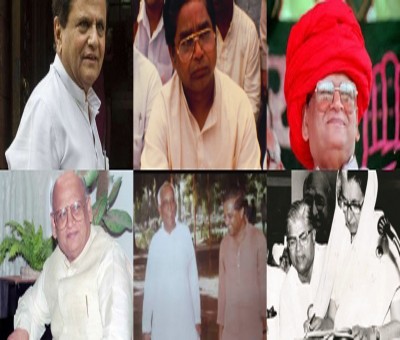
Gandhinagar, Gujarat came into existence in 1960 and in the first assembly elections held in 1962, the Congress won 113 out of 154 seats. The party that ruled the hearts of Gujarat till 1985, with a record 149/182 seats and 55.55 per cent vote share is now struggling to return to power.
A long term strategy was planned against the Congress party in the late 60s, which was executed in a phased manner to tarnish the party's image and create anti-Congress sentiments. A few steps of the Congress worked against it, like the KHAM (Kshatriya- Harijan- Adivasi- Muslim) political strategy pushed away the Patidars and other upper classes from the Congress. As if this was not enough, a 10 per cent increase in OBC reservation in 1985 added fuel to it, creating a deep schism between the upper castes, urban voters and the Congress, says political analyst Manibhai Patel.
The Patidars had already started developing anti Congress feelings. In the late 80s, during the Amarsinh Chaudhary regime, 18 farmers were killed when the police opened fire on agitating farmers. It proved the last straw to push the Patels away from the Congress forever, Manibhai Patel points out.
Patel draws attention towards a new definition of the development model. Since the middle of the 2000 decade, from basic and social infrastructure, entertainment infrastructure like museums, redevelopment of Kankaria river front, science city, Atal bridge, Smriti Van in Kutch, convention centres in Gandhinagar or Surat, are the model of development, because the middle class has few other entertainment options.
Along with this, a parallel Hindutva mindset was being developed in Gujarat, and a propaganda of painting the Congress a party of the lower castes, Dalits, Muslims was gaining ground, in which the 1980s riots on reservation, 1985's anti reservation stir turned into communal violence and damaged the party's image on a large scale. This dual strategy was not only dividing society but eroding the Congress vote bank, according to Ashok Punjabi, Congress vice president.
Though the Congress did a lot for Dalits, Muslims, tribals and other backward classes, they too started deserting the party. When this was happening in the last 30 to 35 years, the party lacked a counter strategy as it was committed to a secular philosophy, he explained.
Like the Sangh cadre, the Congress party's Seva Dal was the backbone of the party, and its cadre was committed to nationalism which lost its charm. The party lost control over the cooperative societies from where it used to derive its leaders. Now it is controlled by the BJP. These all multiplied the problems of the Congress, stopping it from bouncing back. The biggest weakness of the party is that it never got charismatic mass leaders who could override issues and lift the party, feel political analysts and the party leaders.


.jpeg)

